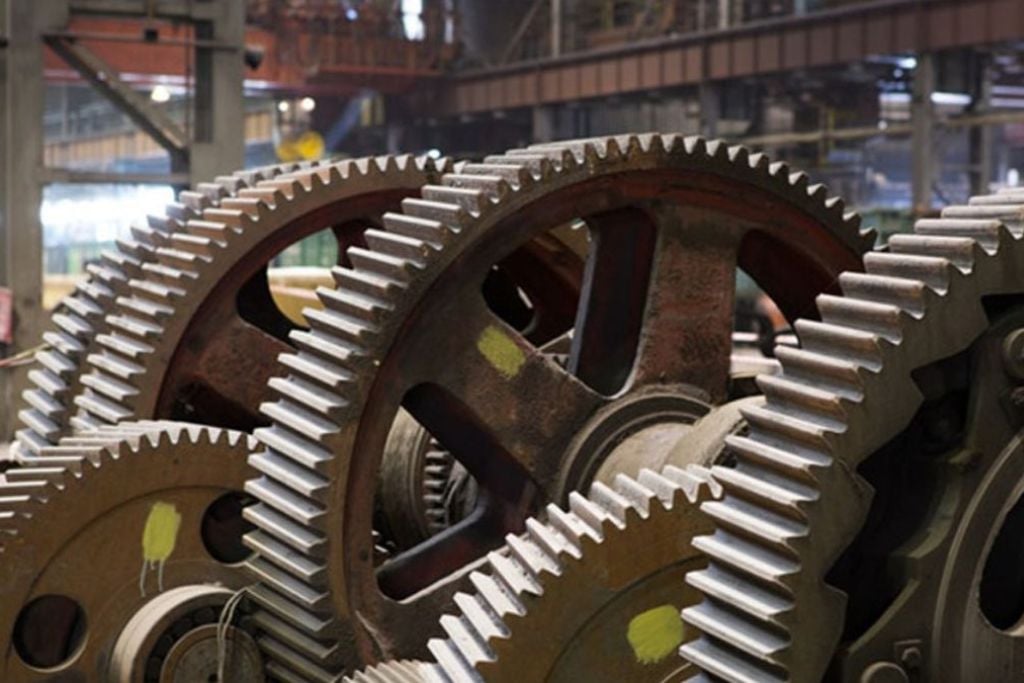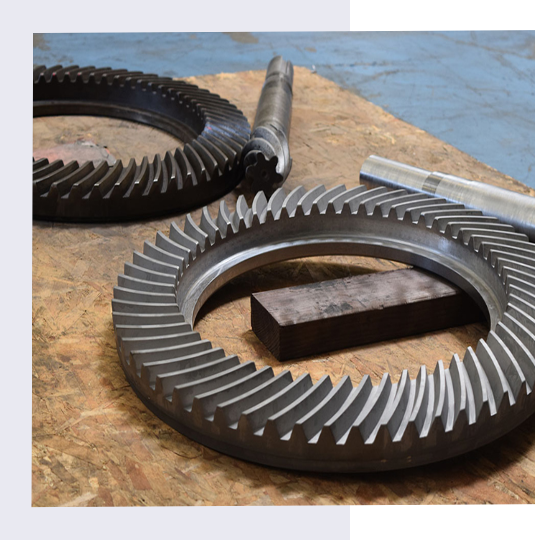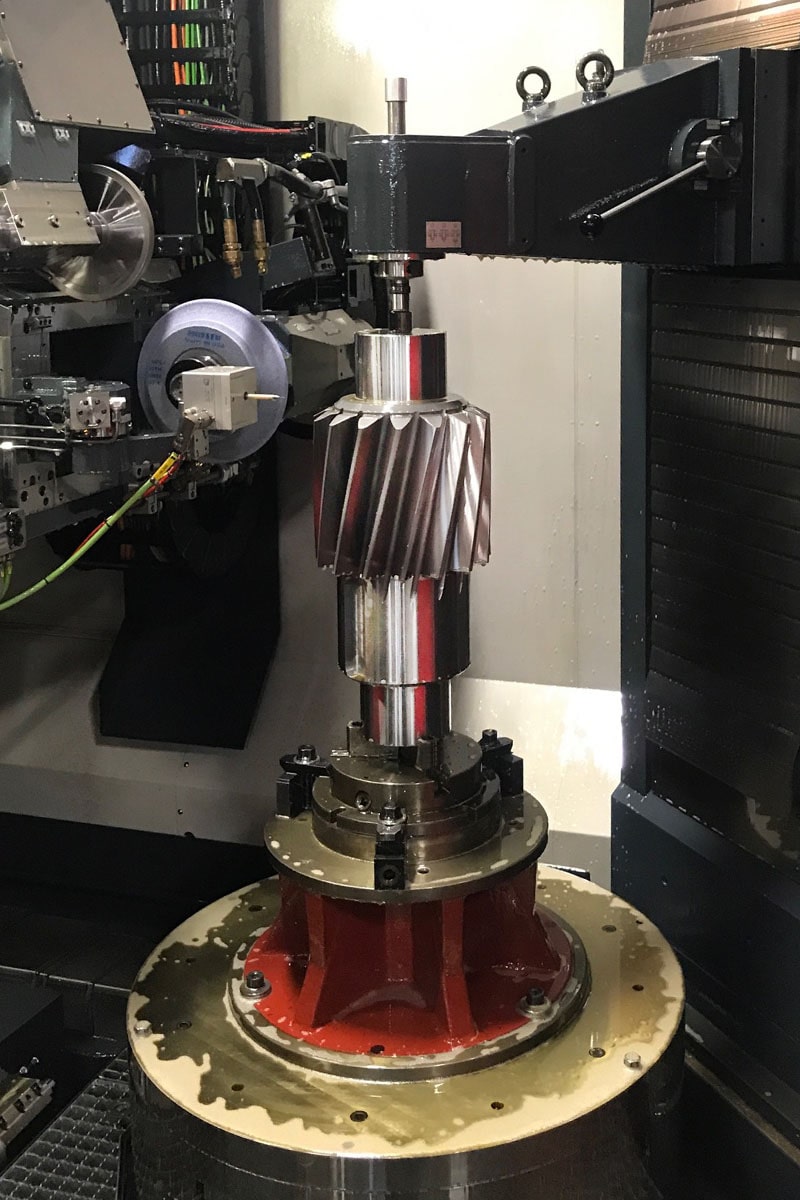Large Gear Manufacturing
We can manufacture any gearing out of any material with the ability to match the exact same rockwell and brinell hardness ratings as the oems.

Need a Quote
Free Pickup and Delivery
Why Choose US?
We Manufacture Custom Gears For Your Unique Needs
At Extruder Gearbox Repair, our highly specialized technicians operate a fully functioning manufacturing division. It is capable of hobbing and grinding gears. Our expertise lies in external gear production, gear tooth production, gear form cutting, and machining processes. It ensures the production of top-quality gear products that exceed your expectations.
We are dedicated to ensuring the highest quality repair and manufacturing services. We constantly strive to improve ourselves and our equipment to continue innovating our services and facility.

Types Of Gear Manufacturing Process
Extruder Gearbox Repair offers a comprehensive range of gear manufacturing processes. All these processes are designed to deliver unrivalled precision and reliability. Here are the top-notch methods we utilize to elevate your machinery to extraordinary heights.
1. Machining
Machining is a precise and versatile process that uses cutting tools to shape gears from a solid workpiece. It offers exceptional accuracy, tight tolerances, and the ability to create complex gear profiles. This makes it a popular choice in gear manufacturing.
2. Casting
Casting is a versatile manufacturing method that involves pouring molten metal into a mould to create gears. It offers the ability to produce complex gear shapes and is suitable for large-scale and small-scale production. Gear casting provides good dimensional accuracy and can utilize various materials.
3. Hobbing
Hobbing is a specialized machining process that uses a cutting tool called a hob to generate gear teeth. The hob is gradually fed into the workpiece, producing precise and uniform gear teeth. Hobbing is widely used for the high-volume production of gears and ensures excellent surface finish and tooth accuracy.
4. Injection Molding
Injection moulding is a process where molten plastic or polymer material is injected into a mould cavity to create gears. It is commonly used for producing plastic gears with intricate designs and high volumes. Injection-moulded gears offer excellent design flexibility and cost-effectiveness and can be tailored for specific applications.
5. Broaching
Broaching is a highly efficient process for producing gears with irregular profiles or large tooth counts. It involves using a toothed cutting tool called a broach to remove material in a series of linear passes. Broaching offers rapid and accurate gear production, making it suitable for a wide range of applications.
5. Extrusion
Extrusion is a method that uses heat and pressure to force molten material through a die to create gears with consistent cross-sectional shapes. It is primarily used for producing gears with constant profiles, such as gear racks or cylindrical gears. Extruded gears exhibit high strength, and durability and are suitable for various industries.
6. Powder Metallurgy
Powder metallurgy is a modern manufacturing technique that involves compacting metal powders and sintering them to form solid gears. This process offers excellent material integrity, high density, and intricate gear geometries. Powder metallurgy gears exhibit superior strength and wear resistance and can be produced from various materials.
7. Blanking
Blanking is a shearing process that cuts out gear shapes from flat metal sheets or strips. It is a cost-effective method for producing gears with simple designs and high volumes. Blanked gears can be further processed through machining or other finishing techniques to achieve the desired specifications.
8. Forging
Forging is a shaping process involving heating, hammering, or pressing metal to form gears. It produces gears with excellent strength, enhanced mechanical properties, and improved fatigue resistance. Forged gears are commonly used in heavy-duty applications that require exceptional durability and reliability.
9. Die Casting
Die casting is a process that utilizes molten metal injected into a die cavity under high pressure to create gears. It offers excellent dimensional accuracy, surface finish, and high production rates. Die-cast gears are widely used in automotive and consumer electronics industries, requiring lightweight and intricate designs.
10. Form Milling
Form milling is a gear manufacturing process that involves using a special cutter to create gear profiles. The cutter follows the contour of a template or master gear, producing gears with precise tooth profiles. Form milling is commonly used for small-batch production or prototyping, offering flexibility and accuracy in gear manufacturing.
These gear manufacturing processes encompass a range of techniques, each with unique advantages and applications. By understanding these methods, our technicians make informed decisions when selecting the most suitable approach for your specific gears.
We Specialize in the Repair of all Gearboxes such as
Gear Manufacturing Process
At Extruder Gearbox, our step-by-step gear manufacturing process ensures precision, durability, and optimal performance. With meticulous attention to detail, our industry-leading process consists of five crucial steps, ensuring that each aspect of gear production is executed with utmost precision.
1. Understanding Gears
At the core of our manufacturing process lies a deep understanding of gears and their functionality. Gears are mechanical devices that efficiently transmit torque and motion between rotating components. They come in various shapes, sizes, and configurations to suit diverse needs. Each type possesses unique characteristics and applications, from spur gears and helical gears to bevel gears and worm gears.
2. Designing the Perfect Gear
At Extruder Gearbox, we prioritize precision and customization in our manufacturing process of gears. As experts in cut gear production, we employ state-of-the-art CAD (Computer-Aided Design) software to meticulously design gears. This enables us to create intricate 3D models, ensuring precise tooth profiles, gear ratios, and overall functionality. We fine-tune the gear design by leveraging advanced simulation tools to optimize performance, durability, and efficiency.
3. Material Selection and Preparation
Once the gear design is finalized, we select the most suitable materials to achieve the ideal coefficient of friction for maximum efficiency. The choice of materials depends on several factors, including load requirements, operating conditions, and budget constraints. Our manufacturing process commonly employs alloy steels, stainless steels, and various specialized alloys, all possessing high tensile strength and wear resistance. These materials offer exceptional strength, wear resistance, and longevity, ensuring our gears withstand the toughest environments.
Before commencing the manufacturing process, the selected materials undergo a thorough preparation phase. This involves cutting the raw material into the desired shape and size, followed by precise heat treatment processes such as carburizing, quenching, and tempering. These heat treatment methods enhance the material’s hardness, toughness, and resistance to wear, resulting in gears built to last. By leveraging cutting-edge processes, including powder metallurgy, we produce gear blanks that meet the same Brinell and Rockwell hardness as any OEM.
5. Quality Assurance and Finishing Processes
We firmly believe that excellence lies in the details. Our gears undergo rigorous quality assurance measures throughout manufacturing to ensure the utmost quality. We employ advanced metrology equipment for detailed inspections, such as coordinate measuring machines (CMMs). This ensures that every gear meets the strictest dimensional and functional specifications.
The gears receive their finishing touches after successfully passing our stringent quality tests. This includes deburring, cleaning, and surface treatment, enhancing their aesthetics, corrosion resistance, and overall performance. These processes enhance our gears’ aesthetics, corrosion resistance, and overall surface finish, ensuring they perform flawlessly and look exceptional.
At Extruder Gearbox, we take immense pride in the quality and reliability of our final products, as our commitment to delivering gears of the highest calibre is unwavering. Choose Extruder Gearbox for Unmatched Gear Manufacturing Expertise
These gear manufacturing processes encompass a range of techniques, each with unique advantages and applications. By understanding these methods, our technicians make informed decisions when selecting the most suitable approach for your specific gears.
Component Manufacturing
Our Gear Manufacturing division is also certified with an AGMA Q12 Qualification. We utilize a Hofler Kingelnberg Rapid 2000K 2m Gear Grinder and a Computerized Klingenberg Gear Checker to ensure the exact tooth shape and grind matches the OEM.
In our manufacturing division, we can offer a variety of services to our repair centre, including:
- Grinding Services
- Gear Grinding
- Gear Cutting
- Milling and Drilling
- Surface, ID, OD Grinding and ID Honing
- Gear Inspection
- Turning
- Broaching and Keysearing
